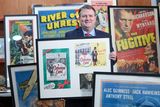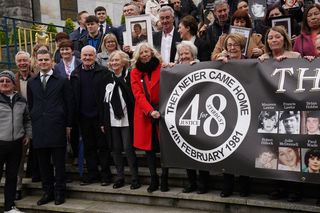Pixar's highland fling 'Brave' looks set to join a long list of glorious films
Pixar's highland fling 'Brave' looks set to join a long list of glorious films -- adored by children and adults alike
Brave at heart: Flame-haired Meriva rebels against her overbearing parents in Pixar's latest adventure
The release of the annual Pixar summer animation has become something of an event in recent years. While 2011's Cars 2 was considered a disappointment, the studio looks to be on safer ground with Brave.
A gritty fairytale set in 10th-Century Scotland, Brave follows the adventures of Merida, the daring and disobedient teenage daughter of a highland clan king.
When Merida's overbearing mother insists she enter an arranged marriage in order to keep the peace, the girl rebels with unforeseen consequences.
Kelly Macdonald, Billy Connolly, Emma Thompson and Julie Walters are among the voice cast, and the film has earned strong reviews in the US. It opens here on August 3.
Brave joins a production line of successful Pixar films that stretches back to Toy Story, in 1995. To date, the studio's films have earned a staggering $7bn (€5.7bn) worldwide, and they've managed to combine this box office success with ground-breaking effects and consistent originality.
The best Pixar films appeal just as much to adults as they do to children, and have made the studio a byword for quality. Owned by Disney, Pixar has changed the face of animation. Here are five of the studio's most glorious achievements:
Toy Story (1995)
When Disney and Pixar agreed to collaborate on Toy Story in the early 1990s, both companies were taking a punt. This would be the first time a feature film would be made entirely using computer-generated imagery, and Pixar was banking its entire future on a story containing not a single recognisable cartoon character.
John Lasseter and his writers came up with the charming idea of a bunch of toys who spring to life whenever their owner is not around, and the character of Woody was inspired by a Casper the Friendly Ghost toy Lasseter had had as a child.
They pitched the film as a buddy story between Woody the cowboy and his rival Buzz Lightyear, an egotistical astronaut who doesn't realise he's a toy at all.
When Pixar first presented a draft of the film to Disney in 1993, Woody was deemed too bitter and sarcastic, and a redraft made him more likeable, and Buzz funnier.
No one knew what to expect when the film was released in late 1995, but critics and the public adored Toy Story. It was hailed as an animation breakthrough, and overnight Pixar became a force in Hollywood.
What it cost: $30m
What it made: $360m
WALL-E (2008)
As Pixar's repertoire has increased, the studio's films have become more and more high concept. And in creative terms, WALL-E might just be their greatest achievement.
A kind of inverted Robinson Crusoe story, WALL-E is set in the year 2815, when the Earth is deserted apart from one small, box-shaped robot.
We then find out that in the early 2100s the planet got so polluted it could no longer sustain life.
Mankind departed aboard huge airliners, leaving behind a small army of WALL-Es (Waste Allocation Load Lifters Earth-class) to clean up the mess.
Our WALL-E is the last of them, and over the centuries he has developed a quirky personality, including a fondness for the musical Hello, Dolly!.
When a probe robot from one of the airliners arrives to check for signs of life he falls in love with it, and embarks on the adventure of his life.
Sublimely animated and packed with witty references to everything from 2001: A Space Odyssey to the 1960s sitcom Get Smart, the animated picture was very slick and clever but it also had a lot of heart, and WALL-E's plight moved audiences to tears.
What it cost: $180m
What it made: $521m
Up (2009)
Part of the secret of Pixar's success is the sharp contrast between its various movies, and Up has little or nothing in common with its predecessor WALL-E -- apart from the level of excellence.
Up tells the story of a lonely old widower called Carl who's about to lose his house and get carted off to a retirement home when he uses tens of thousands of helium balloons to lift him and his beloved house clear of the wrecking ball.
He drifts down to South America, and an idyllic location called Paradise Falls, accompanied by a small boy, a large bird and a talking dog.
Inspired by the adventure serials of the 1940s, Pete Docter's film was also a surprisingly ambitious drama that ventured into some pretty dark areas. In a remarkable, wordless opening sequence, we find out how Carl fell in love with, married and eventually lost his childhood sweetheart to cancer.
Carl's grumpy character was based on Spencer Tracy and Walter Matthau, and perfectly voiced by Ed Asner. And Up counterbalanced its heavier themes with humour, most memorably via a pursuing pack of hilariously distractable talking dogs.
Up was nominated for the Best Picture Oscar in 2010.
What it cost: $175m
What it made: $731m
pwhitington@independent.ie
Join the Irish Independent WhatsApp channel
Stay up to date with all the latest news













